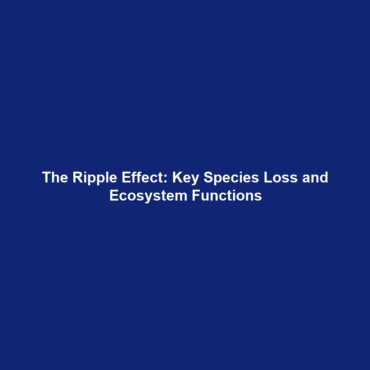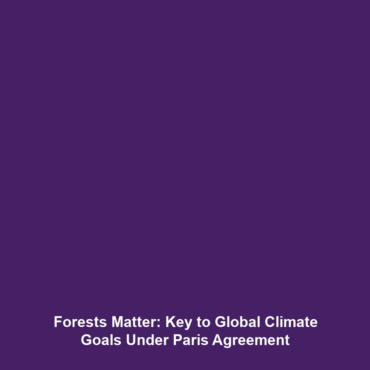The Impact of Losing Key Species on Ecosystem Functions
Introduction
The loss of biodiversity, particularly key species, poses a significant threat to ecosystem functions essential for life on Earth. The impact of losing species that contribute to crucial processes, such as pollination and seed dispersal, cannot be overstated. These functions are vital for maintaining healthy ecosystems, which support a variety of life forms and provide numerous ecosystem services, including food production and climate regulation. Understanding the implications of biodiversity loss, particularly through deforestation, is essential for conservation efforts and sustainable practices.
Key Concepts
Pollination
Pollinators, such as bees and birds, facilitate the reproduction of many flowering plant species. Their decline can lead to decreased plant diversity and reduced agricultural yields. This highlights the interconnectedness of species within ecosystems, emphasizing the role of biodiversity in sustaining critical ecological functions.
Seed Dispersal
Key species like certain birds and mammals are responsible for seed dispersal, which is crucial for plant regeneration and diversity. When these species are lost, the distribution of plants can become uneven, disrupting habitats and food webs. This fragmentation can also lead to ecosystem collapse, indicating a direct correlation between species loss and ecosystem health.
Applications and Real-World Uses
Understanding the impact of losing key species on ecosystem functions helps in a range of practical applications related to deforestation and biodiversity loss.
- Agricultural Practices: Implementing conservation strategies that protect pollinators can enhance crop yields and sustainability.
- Ecosystem Management: Restoration efforts must consider species interactions, particularly those involving pollination and seed dispersal.
- Climate Change Mitigation: Healthy ecosystems that maintain biodiversity contribute to carbon sequestration, addressing climate change issues.
Current Challenges
Despite the importance of studying the impact of species loss, several challenges hinder effective research and application:
- Data Gaps: Limited long-term ecological data makes it difficult to assess changes over time.
- Human Activities: Urbanization and agriculture continue to disrupt habitats, complicating conservation efforts.
- Policy Implementation: Effective policies are often lacking or poorly enforced, impeding biodiversity preservation.
Future Research and Innovations
Future research is crucial in understanding the profound impacts of losing key species on ecosystem functions. Innovations in the following areas may lead to breakthroughs:
- Genetic Studies: Advances in genetic research could enhance our understanding of species interactions and resilience.
- Remote Sensing Technology: New technologies can improve habitat monitoring and facilitate more informed conservation strategies.
- Community-Based Conservation: Engaging local communities in biodiversity monitoring and conservation can promote sustainable practices.
Conclusion
In summary, the impact of losing key species on ecosystem functions such as pollination and seed dispersal is critical in the broader context of deforestation and biodiversity loss. As we face increasing challenges related to habitat destruction, it becomes imperative to prioritize conservation efforts. To improve our world, we must act now—protecting ecosystems not only supports biodiversity but also sustains human life. For further insights, visit our related topics page.

